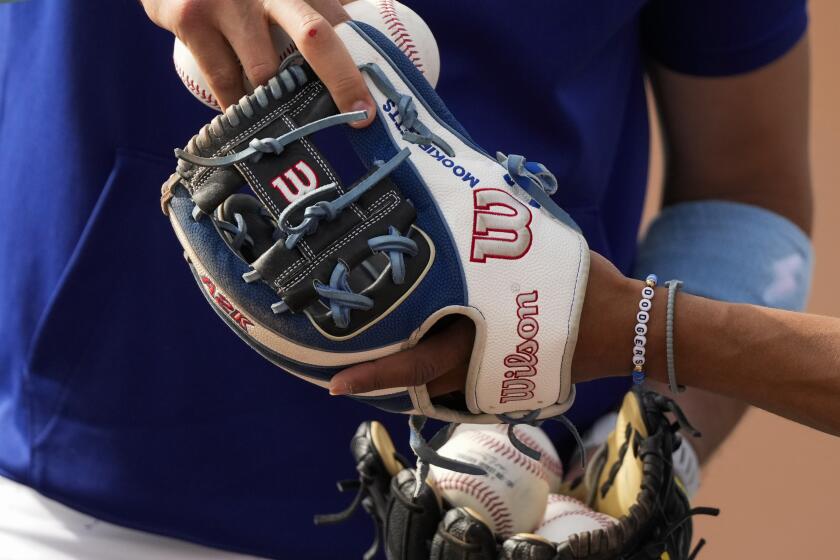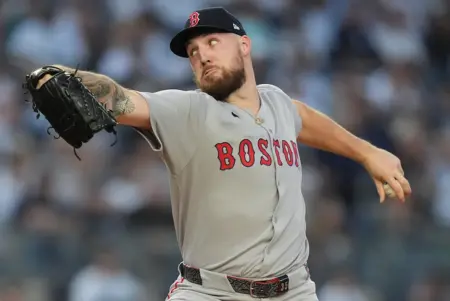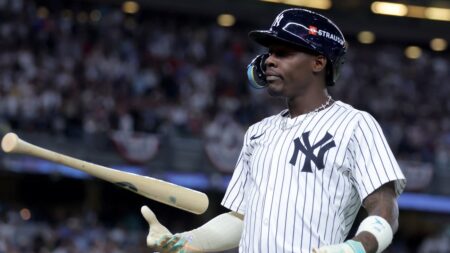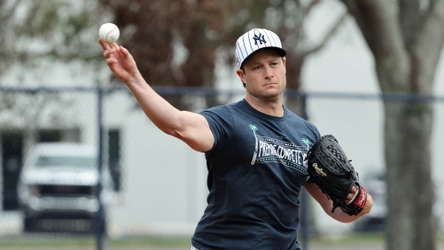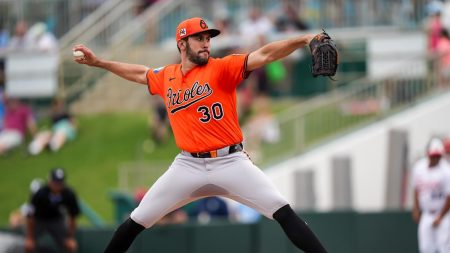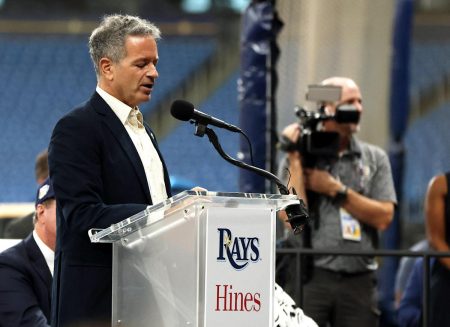Tim Anderson’s New Frontier: Versatility on the Angels Roster
Tim Anderson, the 31-year-old shortstop, is no stranger to the pressures of the major leagues. With 946 regular-season games under his belt, almost all at shortstop, Anderson has earned a reputation for his defensive prowess and batting talent. However, the landscape of MLB is evolving, and Anderson is adapting by learning to play the outfield. During spring training, he was seen working out with an extra-large glove, a stark contrast to the smaller mitts he’s used to. The oversized glove, given to him by Angels coach Eric Young Sr., represents a significant shift in his career. Anderson admitted, “It feels weird,” but he’s embracing the change. “Why limit yourself? Being able to play multiple positions, it’s pretty cool.”
The Importance of Versatility in Modern Baseball
In today’s MLB, where rosters are often tight with 12 or 13 pitchers, two catchers, and a designated hitter, versatility has become a crucial asset for bench players. Perry Hill, who coached Seattle’s Dylan Moore to a Gold Glove as a utility player last season, explained the practical benefits: “Say your first baseman gets a base hit in a tie game leading off the ninth inning. Well, the guy that goes in to pinch run for him, he needs to know how to play first base so the manager doesn’t have to use a pinch runner and another player.” This flexibility gives managers the freedom to make strategic moves without compromising their lineup. It’s a trend that MLB has recognized, introducing Gold Gloves for utility players just three years ago. But for these players, versatility means more than just changing positions; it often involves changing gloves as well.
The Art of Choosing the Right Glove
Gloves are more than just equipment; they are an extension of a player’s hand. First basemen use large, rounded mitts to scoop balls out of the dirt, while middle infielders prefer smaller, shallow-pocketed gloves for quick double plays. Third basemen need meatier gloves to handle the fast-paced action at the hot corner, and outfielders often push the MLB limits with gloves that can reach 13 inches in length and 7¾ inches in width. Scott Kingery, now with the Angels, has used three different gloves in a single season, adapting to various positions. Dylan Moore, the Mariners’ Gold Glove utility man, carries four gloves: two for infield, one for first base, and another for the outfield. For younger players, choosing the right glove is a technical process, but for veterans like Hill, comfort is king. He advised, “Use a glove that your hand can control. You can’t be a small-hand guy like me and use a big glove. It’s just not practical.”
Long-Term Love for a Single Glove
While most utility players carry multiple gloves, there are those who have a long-term commitment to a single mitt. Jeff McNeil, the Mets’ second baseman, has been using the same 12-inch glove since being drafted in 2013, long before he got married. Cookie Rojas, a five-time All-Star, played every position with the same glove during his 16-year career, donating it to the Hall of Fame upon retirement. Breaking in a new glove can be a laborious process, involving drills, batting practice, and sometimes even using a pitching machine to soften it up. For players like McNeil and Rojas, the familiarity and trust in a single glove can be a significant advantage.
The Mental Challenge of Versatility
Adapting to multiple positions is not just about physical skills; it’s a mental game. Ron Washington, the Angels’ manager and a former multi-position player himself, emphasized the mental aspect: “If you don’t buy in, it’s hard. Because you’re just making an excuse to not do something.” Washington believes that the athletes in MLB are more than capable of handling the technical and physical demands of different positions. The real challenge, he noted, is the mental willingness to adapt and learn. For Anderson, this means adjusting to the less stressful but equally demanding role of second base. “At short I feel like you’ve always got something to do. It’s like the quarterback, you’ve got to run the field. Second, it’s a lot more chill,” he said. However, even in less stressful positions, the nuances of the game can catch players off guard, and mental preparation is key.
Versatility: A Path to Success and Recognition
The Dodgers’ success in the World Series last season is a prime example of how versatility can pay off. Four of their players played four or more positions, including superstar Mookie Betts, who handled right field, second base, and shortstop. For Betts, versatility was a plus, but for players like Moore, it’s a necessity. Moore appeared in a career-high 135 games last year despite hitting .201, largely because of his ability to play anywhere on the field. “It’s something that’s kept me in the big leagues,” he said. “To be able to be an asset and valuable in ways that our manager can put me out there in any position, it gets you more at-bats.” Moore’s versatility even earned him a Gold Glove, a fitting recognition given the multi-sized gloves he uses in his roles. As the game continues to evolve, players like Anderson and Moore are proving that adaptability is the new gold standard.

